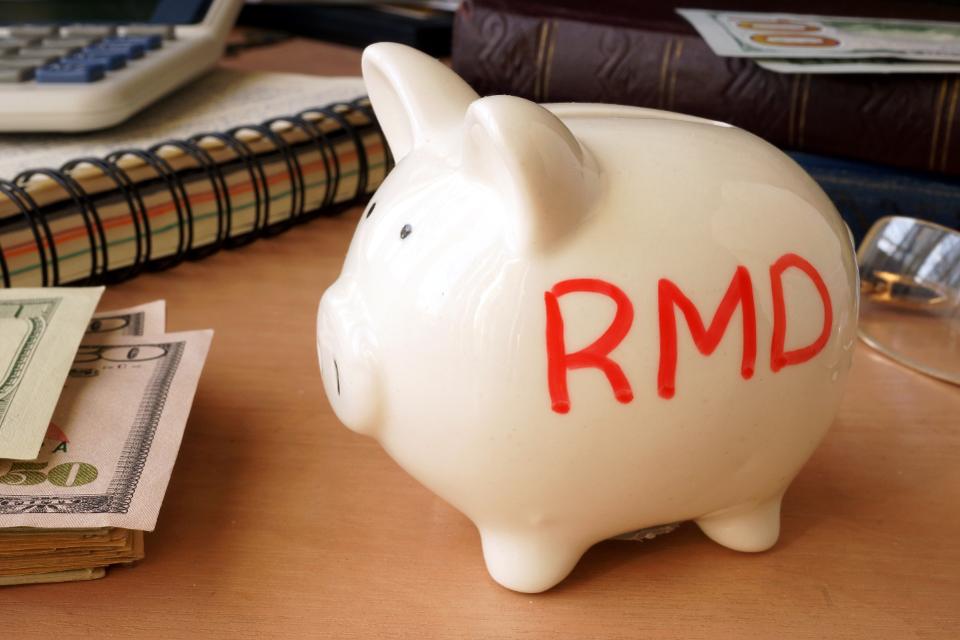CARES Act Waives Required Minimum Distributions (RMDs) from Retirement Accounts for 2020
Mar 28, 2020 • Written by Paul Staib | Certified Financial Planner (CFP®), MBA, RICP®
Blog Home » Retirement Planning » CARES Act Waives Required Minimum Distributions (RMDs) from Retirement Accounts for 2020

Among the numerous provisions of the massive aid package, the Coronavirus Aid, Relief, and Economic Security Act or CARES Act, are waivers for 2020 required minimum distributions (RMDs).
Waiver of RMDs – How the new rules will work
As it did in 2009, Congress has again provided relief by allowing all RMDs due in 2020 to be waived. You don’t have to take them, which in turn will reduce your 2020 tax bill.
Who can qualify?
Anyone with an RMD due in 2020 qualifies, including beneficiaries, and including those who turned age 70 1/2 in 2019 and had to take their first RMD by April 1, 2020.
Benefits
This will provide great help, because most 2020 RMDs are based on the retirement account value on December 31, 2019, when the stock market was significantly higher than where it is today. But as we all know, this can swing wildly as we are still in an uncertain economic situation.
If the 2020 RMDs had not been waived, you likely would have had to withdraw a greater percentage of your IRA and pay a big tax bill on value that no longer exists. So, it’s good Congress gave us all a year of reprieve to sit this out and see what happens, and hopefully have more time to recover losses.
Any downside to a waiver of RMDs?
No. Remember that the RMD is a minimum required distribution. You can always take more, so even though RMDs are waived, you can still withdraw any amount you need. Not only is there no downside, the RMD suspension provides flexibility and puts control back in your hands. You can withdraw or not, depending on your own situation. There are no rules to worry about.
That said, the question might be, is there any benefit to withdrawing even if you are not required to? After all, why would anyone withdraw and pay tax on that withdrawal if they didn’t have to?
You might look at your tax situation and realize that for 2020, you may be in a very low tax bracket. It might be beneficial to withdrawal some IRA money to take advantage of today’s historically low tax rates. You generally don’t want to waste a low tax bracket. If you don’t use it to the max, its lost opportunity.
Roth Conversion?
Currently, not only are tax rates relatively low, but market values are low too, and that combination is perfect for a Roth IRA conversion, especially since both market values and tax rates are likely to increase in the future.
Normally, RMDs cannot be converted to Roth IRAs, but now since there are no RMDs, you can withdraw IRA funds at low values and low tax rates and convert them to your Roth IRA. Yes, you pay taxes on the conversion, just like you would have on your RMD. But your RMD could not be converted to a Roth, so even though you paid the tax, you could not get the conversion benefit. Now, under this 2020 RMD waiver period, you can get more for the tax you pay by being able to convert the funds you withdraw to your Roth IRA at a relatively low tax cost.
There are several additional benefits to executing a Roth IRA conversion:
- First, any amount converted removes those funds from your IRA, lowering the balance that will be subject to future RMDs, and in turn lowers your income and tax bill for future years. Lowering your income in the future could also lower the tax on your Social Security benefits and lower your Medicare IRMAA (income related monthly adjustment amount) surcharges.
- Additionally, once the funds are in your Roth IRA, there are no more lifetime RMDs, and anything you withdraw will likely be tax-free. The Roth funds will also pass income tax-free to your beneficiaries.
- Converting now when market values have dropped will mean that any future rebound will now accumulate tax-free to you in your Roth IRA. If the market rebounded while the funds remained in your traditional IRA, then those gains would be eventually taxed.
The key factor in deciding whether to convert or not is the tax rate you are at now compared to what future tax rates might be. If you expect your future tax rate in retirement to be the same or higher, it’s beneficial from a tax perspective to convert.
Given the astounding $2 trillion+ dollar stimulus bill, it’s certainly more likely that tax rates will have to increase soon. This may be another reason to take advantage of this one-time opportunity to move what would have been your RMD into a tax-free Roth IRA.
Warning: Roth conversions cannot be undone
Of course, you should examine your own situation and review it with a professional tax or financial adviser, because once you convert to a Roth IRA, it cannot be undone. The tax will be owed. Roth conversions are permanent.
Charity benefit
Even though RMDs are waived, you can still use your IRA to get a tax break on giving to charity. If you normally give to charity, you may consider doing it with qualified charitable distributions (QCDs) from your IRA. The funds are directly transferred from your IRA to a charity and excluded from income. If there were RMDs, this would go towards satisfying the RMD, but even if there are no RMDs this year, this is a better way to give to charity and reduce your taxable IRA balance at the same time. Only IRA owners and beneficiaries who are age 70 1/2 or older qualify for this, though. This age did not change even though the age for RMDs was increased to 72. If you don’t do a QCD, your only charitable deduction is likely to be the new $300 above-the-line deduction created by the bill. (Above-the-line means it comes before you calculate your adjusted gross income). Otherwise, you probably will get no benefit from your donations, since most people take the standard deduction. QCDs give you back a tax benefit that would otherwise be lost. QCDs are another reason to withdraw from your IRA, even if you don’t have to.
If there is any downside at all to this RMD relief, it’s that, unfortunately, anyone who needs the funds and takes the RMD anyway will not benefit. According to the Treasury’s own numbers, it’s estimated that roughly 80% of IRA owners take more than the minimum, so this relief will not help a majority of those who rely on their retirement savings accounts for annual income.
Bottom line: RMDs due for 2020 are waived, but you can take them if you need the funds or to take advantage of the tax planning opportunities (including possible Roth conversions and/or QCDs) provided for this year.

Paul Staib | Certified Financial Planner (CFP®), MBA, RICP®
Paul Staib, Certified Financial Planner (CFP®), RICP®, is an independent Flat Fee-Only financial planner. Staib Financial Planning, LLC provides comprehensive financial planning, retirement planning, and investment management services to help clients in all financial situations achieve their personal financial goals. Staib Financial Planning, LLC serves clients as a fiduciary and never earns a commission of any kind. Our offices are located in the south Denver metro area, enabling us to conveniently serve clients in Highlands Ranch, Littleton, Lone Tree, Aurora, Parker, Denver Tech Center, Centennial, Castle Pines and surrounding communities. We also offer our services virtually.
Read Next
6 Strategies to Reduce Taxes in Retirement
• Written By Paul Staib | Certified Financial Planner (CFP®), MBA, RICP®
For many people, reducing taxes is the easiest and fastest way to increase investment returns, keep a retirement plan back…
Maximizing After-Tax Investment Returns through Asset Location
• Written By Paul Staib | Certified Financial Planner (CFP®), MBA, RICP®
You probably already appreciate the beauty of asset allocation. When you spread your money among investment categories that share little…
